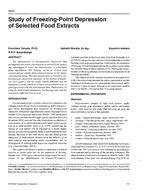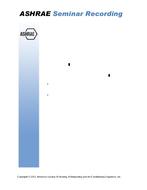Natural ventilation is governed by the overall leakage characteristics of a building (accidental and purposely provided) and by the driving forces of wind and temperature. As greater control is influenced over airtightness design, the reliable prediction of naturally driven air change becomes increasingly dependent on the quality of climatic data. The influence of wind is particularly difficult to quantify, since its behavior is dramatically influenced by surrounding terrain and shielding conditions. This paper seeks to review and address the relevance of wind pressure as a driving mechanism. A simple multi-flow path simulation model is introduced and is used to illustrate the effects of wind on air change rate. The model is specifically used to illustrate the sensitivity of results to variations in surface wind pressure coefficients and to differing shielding and terrain roughness conditions. Model results are also used to discuss the significance of both temperature differences and mechanical ventilation on the impact of wind.
Units: SI
Citation: Symposium, ASHRAE Transactions, 1988, vol. 94, pt. 2, Ottawa
Product Details
- Published:
- 1988
- Number of Pages:
- 16
- File Size:
- 1 file , 1.4 MB
- Product Code(s):
- D-OT-88-13-1


